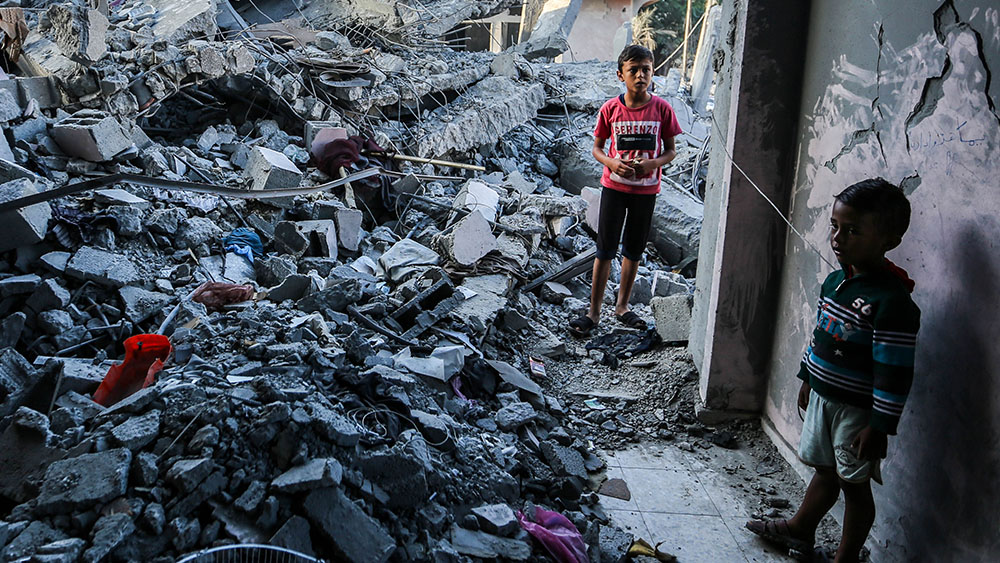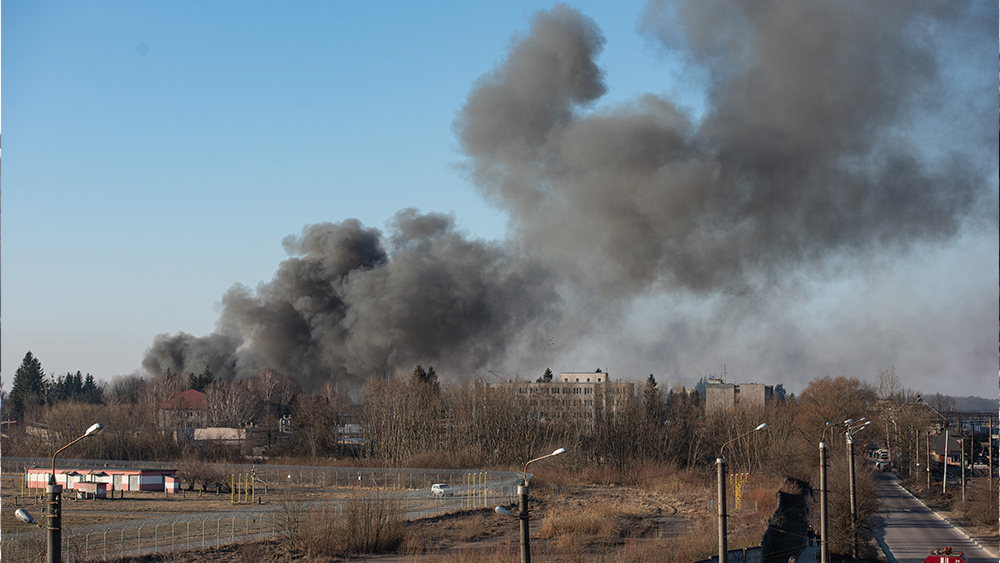Reuters: Ukrainian women now work in mines because so many men were sent to the battle front
11/29/2023 / By Belle Carter

More than a thousand Ukrainian male miners have been sent to the frontlines to fight against Russia since the Eurasian country’s invasion of Ukraine started, causing coal mining companies to suffer huge staff shortages. That’s why hundreds of women have now been allowed to work underground for the first time in Ukraine’s history.
DTEK, Ukraine’s largest private energy company said nearly 3,000 of its 20,000 mine workers are fighting. The firm confirmed to Reuters that it has hired around 400 women to make up the shortfall. Some women have even been conscripted by the military.
Back in the time when Ukraine was still part of the Soviet Union, legislation banned women from dangerous employment such as mining. The law was later repealed by President Volodymyr Zelensky’s government shortly after the conflict began in 2022. In one mine near the city of Pavlograd, female workers told the news outlet that they did everything their male counterparts used to, save for some heavy lifting. “Our boys were taken to the front, and now we need to support them: There is no one else to work in the mine now,” a 22-year-old miner said. Of the roughly one thousand miners from this mine and its nearby twin enterprise who went to fight, 42 have been killed.
For five months, the female miner has worked as a technician 470 meters (1,542 feet) below ground, servicing the small electric trains that haul workers more than four kilometers (2.5 miles) from the lift shaft where they descend to the seams of coal. She said the work is difficult, citing how the battery lids are heavy and the steam can be unpleasant. The pay is good, however, and she feels a sense of duty to stay and for those who have gone to fight. Her older brother worked in the same mine but he had to join the army two weeks after the war erupted.
Kyiv does not publish casualty figures but more than 103,000 Ukrainian troops died between the first week of June and the third week of November, according to the most recent figures released by the Russian Ministry of Defense. Last December, European Commission President Ursula von der Leyen said the Ukrainian military had suffered 100,000 fatalities in the first nine months of the conflict. It is unclear how many more died in the six months in between these tallies, but the total death toll on the Ukrainian side likely stands far above 200,000. While the nation suffers this many deaths, Kyiv has turned to older and less fit men to boost its ranks. According to a report by Time magazine earlier this month, the average age of a Ukrainian soldier is now 43, up from 30-35 in March 2022. (Related: Ukrainian armed forces failed to achieve goals in three months of counteroffensive effort, Russian defense minister reports.)
In October, a law came into effect requiring women aged between 18 and 60 with medical qualifications to register with conscription authorities. According to a note on the Ukrainian government’s website, “In the future, women may be called up for military service or engaged to perform work to ensure the defense of the state.”
Meanwhile, during an online address to the recent G20 summit leaders, Russian President Vladimir Putin claimed that he has never rejected peace talks with Ukraine, whereas Ukraine has publicly withdrawn from the negotiation process and outlawed all contact with Moscow.
Ukraine’s energy deputy minister announces closure of coal plants by 2035
Ukraine has announced the country’s determination to close all of its state-owned coal plants by 2035 at a side event at the Ukraine Recovery Conference in London back in June. Ukraine’s Deputy Minister of Energy Yaroslav Demchenkov has restated the plan that had actually been first announced in 2021 at COP26 in Glasgow, a few months before Russia launched its war with the country.
According to the Energy Charter Secretariat, “no European power system has ever suffered, endured and withstood such large-scale destruction, including during the first and second world wars.” As of February this year, the cost of damage to Ukraine’s energy sector was estimated at $10 billion. Much of Ukraine’s coal infrastructure lies in ruins now. Plants have been destroyed or damaged, and many mines in territories occupied or shelled by Russia since 2014 are flooded. Given the extent of the damage, and Ukraine’s historic dependence on Russia for coal, gas and nuclear fuel, rebuilding Ukraine’s Soviet-era energy infrastructure is definitely out of the plans.
Ukraine’s energy minister German Galushchenko recently told Bloomberg Green: “It is very important to decentralize our power generation. The obvious solution is renewables.”
Visit UkraineWitness.com to get updates on Ukraine’s situation amid the ongoing conflict with Russia.
Watch the video below showing a Ukrainian woman positioned on the war frontlines while assisting a wounded soldier.
This video is from the Prisoner channel on Brighteon.com.
More related stories:
Ukrainian militants reportedly attack another power substation in Russia.
Zelensky accuses Russia of turning winter into a weapon of mass destruction.
Study: Soaring fuel prices could kill more Europeans this winter than the war in Ukraine.
U.S. proxy war: Kyiv’s counteroffensive kills or wounds 800 Ukrainians per day Russia reports.
Sources include:
Submit a correction >>
Tagged Under:
big government, chaos, coal mines, Collapse, DTEK, energy supply, fossil fuels, fuel supply, national security, Pavlograd mine, physical labor, power, renewable energy, Reuters, Ukraine, Ukraine-Russia War, Vladimir Putin, Volodymyr Zelensky, women miners, WWIII
This article may contain statements that reflect the opinion of the author
RECENT NEWS & ARTICLES
COPYRIGHT © 2017 CHAOS NEWS





















